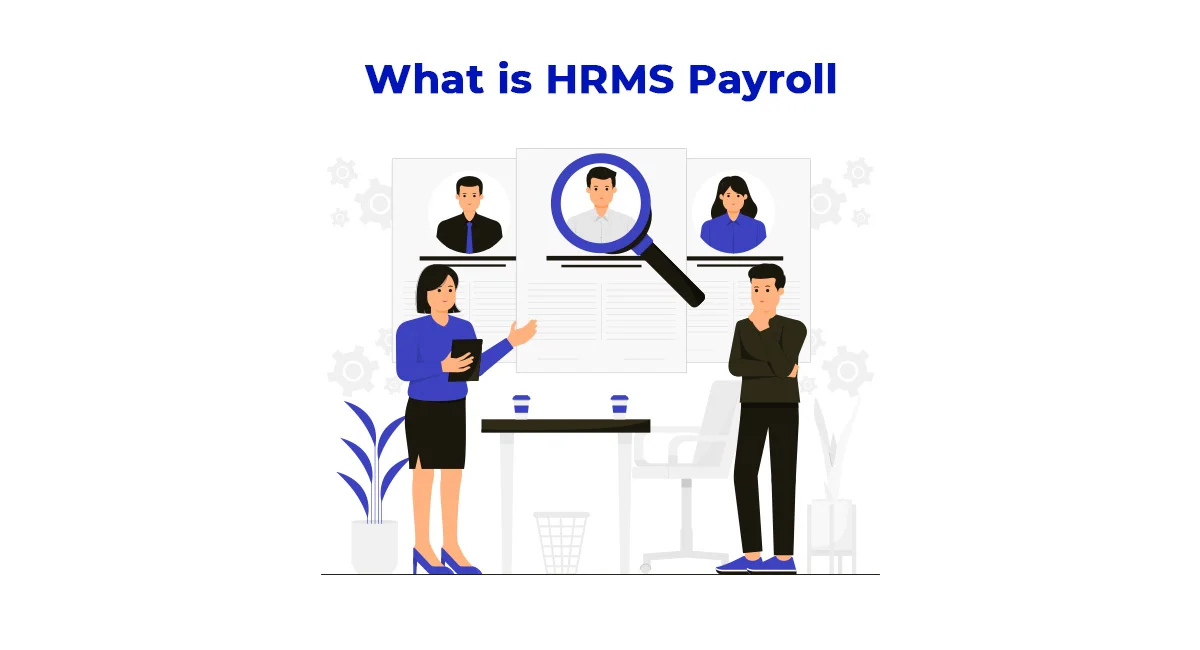Guide to HRMS Payroll Software: Features, Benefits & Future Trends In today’s dynamic business landscape, managing human resources efficiently is a cornerstone of success. Organizations are constantly seeking innovative ways to optimize operations, reduce administrative burdens, and enhance employee satisfaction. This is where HRMS payroll systems come into play. These systems revolutionize HR and payroll management by automating processes and ensuring compliance with legal requirements. This comprehensive guide explores the concepts, features, benefits, and future trends of HRMS payroll software, providing actionable insights for organizations aiming to streamline workforce management. What is HRMS Payroll? HRMS payroll refers to software that integrates human resource management systems (HRMS) with payroll functionalities. It automates essential HR tasks like employee onboarding, attendance tracking, leave management, and salary processing. Key Components of HRMS & Payroll Software Employee Database Management: Maintains comprehensive employee records. Attendance and Leave Integration: Automates attendance tracking with biometric or online systems. Payroll Processing: Calculates salaries, tax deductions, and benefits accurately. Legal Compliance: Ensures adherence to labor laws, tax regulations, and statutory requirements. Employee Self-Service Portals: Allows employees to access payslips, request leaves, and update personal information. Analytics and Reporting: Provides real-time data insights to support strategic decision-making. The Growing Importance of HRMS and Payroll Systems in Modern Businesses 1. Time-Saving Automation Manual processes for payroll and HR management can be labor-intensive and error-prone. Automating these tasks using HRMS payroll software not only saves time but also enhances operational efficiency. 2. Enhanced Accuracy Errors in payroll processing can lead to financial losses and employee dissatisfaction. By using payroll HRMS, organizations can ensure accurate salary calculations, tax deductions, and benefits distribution. 3. Legal and Tax Compliance Compliance with labor laws and tax regulations is non-negotiable for businesses. HRMS and payroll systems help companies stay compliant, minimizing risks of penalties or audits. 4. Better Employee Experience A streamlined HR and payroll system fosters trust and transparency among employees. Self-service portals empower employees to manage their information, enhancing satisfaction and engagement. Key Features of HRMS Payroll Software Step 1: Data Collection The system gathers employee data, including attendance, leaves, and work hours. Step 2: Payroll Computation It calculates salaries, deductions, and bonuses based on predefined policies. Step 3: Compliance Checks The software ensures compliance with applicable tax laws and regulations. Step 4: Payment Processing Once approved, the system processes payments and generates payslips. Step 5: Reporting Detailed reports are generated to provide insights into payroll trends and expenses. Case Study: The Transformation of KSFE with HRMS KSFE Payroll Software The Kerala State Financial Enterprises (KSFE) implemented a cutting-edge HRMS KSFE payroll system to address inefficiencies in HR and payroll management. Challenges Faced Manual payroll processes were time-consuming and error-prone. Lack of integration between attendance systems and payroll processing. Difficulty ensuring compliance with local labor laws. Solution KSFE adopted a customized HRMS KSFE payroll solution that automated attendance tracking, salary computation, and compliance management. Results Reduced payroll processing time by 40%. Achieved 100% compliance with statutory requirements. Improved employee satisfaction through a self-service portal. How to Choose the Right HRMS Payroll Software 1. Identify Your Needs Understand your organization’s specific requirements, such as employee count, compliance needs, and desired features. 2. Evaluate Vendor Expertise Choose vendors with proven expertise in providing HRMS and payroll solutions. 3. Scalability Ensure the software can grow with your business, accommodating additional users and features. 4. User-Friendly Interface The system should be intuitive and easy to use for both HR staff and employees. 5. Cost-Effectiveness Assess the total cost of ownership, including setup, licensing, and maintenance costs. Benefits of Integrating HRMS Payroll Software 1. Increased Efficiency By automating repetitive tasks, HRMS payroll systems free up HR professionals to focus on strategic activities. 2. Improved Decision-Making Analytics tools provide real-time insights into workforce performance and payroll trends. 3. Enhanced Data Security With advanced encryption and access controls, HRMS & payroll systems safeguard sensitive employee data. 4. Better Workforce Planning Accurate data enables organizations to plan for workforce requirements, including recruitment and training. Challenges of HRMS and Payroll Systems 1. Initial Implementation Costs Investing in payroll HRMS software may require significant upfront expenses for smaller businesses. 2. Resistance to Change Employees and HR teams may face a learning curve during the transition from manual to automated systems. 3. Data Migration Issues Ensuring the accuracy of data transfer from legacy systems can be challenging. Future Trends in HRMS Payroll Systems 1. AI and Machine Learning Future HRMS payroll software will incorporate AI for predictive analytics, enabling proactive decision-making. 2. Cloud-Based Solutions Cloud technology is making HRMS payroll systems more accessible, secure, and scalable. 3. Blockchain for Payroll Blockchain technology will enhance transparency and security in payroll transactions. 4. Enhanced Customization Businesses will demand more tailored solutions to meet specific organizational needs. How HRMS and Payroll Systems Drive Business Success Investing in HRMS payroll software is a strategic move that delivers measurable benefits. These systems not only enhance operational efficiency but also improve employee satisfaction and ensure compliance with legal standards. By leveraging the power of HRMS & payroll systems, organizations can stay ahead of the competition, reduce administrative burdens, and focus on strategic goals. Conclusion: The Case for HRMS Payroll Solutions The integration of HRMS payroll systems into workplace operations is no longer a luxury—it’s a necessity. Whether it’s automating payroll, ensuring compliance, or enhancing employee satisfaction, these systems are transforming how businesses manage their workforce. From the success story of KSFE to the future potential of AI-driven solutions, it’s evident that investing in the right HRMS and payroll software can unlock tremendous value for organizations.

